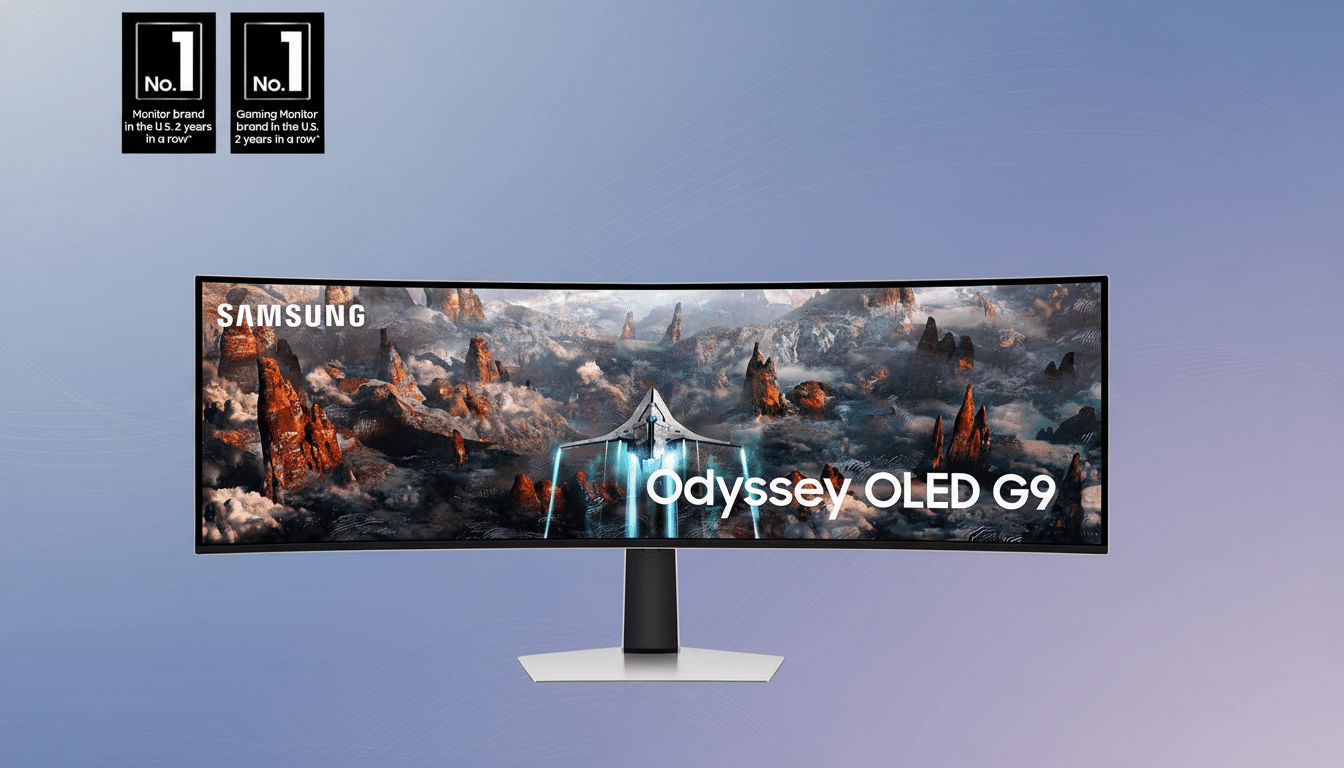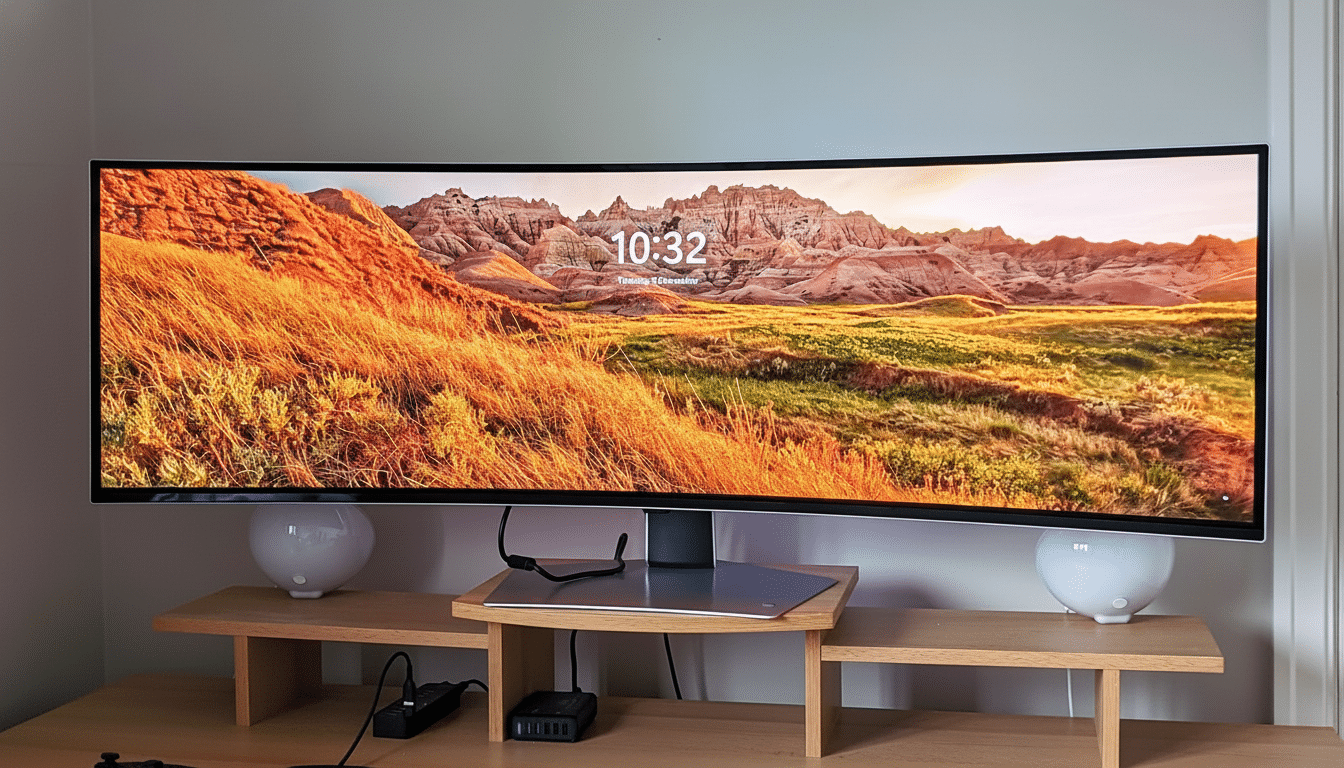A small post-sale holdover, meanwhile, is still available at Amazon on the Samsung 49-inch Odyssey G93SC OLED (still $900, or $700 off its MSRP of $1,600). For a flagship-grade ultrawide based on a cutting-edge QD-OLED panel, that 44% discount is exceptionally aggressive and hasn’t immediately vanished (as so many here-today-gone-tomorrow deals seem to do at most major retailers).
Why This Samsung OLED Monitor Discount Is Different
Large-format OLED gaming monitors tend to cost a pretty penny, especially in 240Hz flavors. At this price point, 49-inch options usually rest far above these numbers. A 240Hz option with dual 1440p OLED displays for under $1,000 is noteworthy, and deal trackers have listed just a handful of drops this low all year.

Value isn’t just a matter of panel size. QD-OLED technology combines OLED’s perfect blacks with quantum-dot color conversion, providing high color volume and outstanding uniformity without any of the haloing typical to FALD or mini-LED backlights. That combo is what lets dark scenes in games look three-dimensional instead of grayish, when you compare the two side by side.
Key Specs Built for Top-End Gaming Performance
The Odyssey OLED G93SC is a 49-incher with an aggressive, practically drooping 1800R curve, in addition to the size of the display and its Dual Quad HD resolution.
In use, it’s as if two 27-inch 1440p monitors were fused together without any bezels, which is great for ultrawide racing and flight sims or sprawling RPGs that benefit from peripheral vision.
It offers a 240Hz refresh rate, close-to-outstanding pixel response (Samsung claims a rate of only 0.03ms), and works with both G-Sync and FreeSync Premium Pro to eliminate tearing and stutter.
OLED’s per-pixel management is a boon for HDR performance, delivering inky blacks and bright highlights that aid in the unveiling of shadow detail. Indeed, independent testing labs and reviewers like RTINGS and PCMag have noted the huge strengths of QD-OLED panels in contrast and motion clarity.
On the connectivity front, it provides full support for modern graphics pipelines with DisplayPort 1.4 and HDMI 2.1 inputs, allowing gamers to play at high frame rates from both PCs and current consoles.
For creators and streamers, the broad canvas and generous color coverage provide space for timelines, chat, and mixers alongside the main viewport.

Burn-In Safeguards and Longevity for OLED Panels
Samsung incorporates a few safeguards designed to combat the most notorious and controversial aspect of OLED: image retention. Like other such displays, the panel is adaptive in several ways:
- The Thermal Modulation System dynamically adjusts brightness based on surface temperature.
- The display automatically recognizes static elements such as logos and taskbars and slightly lowers their luminance.
- A screen saver comes on after an idle period.
Long-term tests from various outlets using stress panels for months on end show that modern OLEDs are worlds apart from first-generation models, so long as you engage safeguards and content is mixed. “Pixel shifting and such are meaningful insurance for users who will be switching between gaming and productivity, without incident and without degrading picture quality in a way that is even visible.”
Productivity Perks on a Giant 49-Inch Gaming Monitor
Outside of games, the 49-inch width is a workflow multiplier. Picture-by-Picture places two sources next to each other — say, a work laptop and a desktop — while Picture-in-Picture stuffs a smaller window into one of the corners. With DQHD resolution, you can keep your main content in the center and a sidebar on each side more easily visible without ever having to click away.
In practice, it translates into fewer compromises; timelines in video editors get more space, spreadsheets add extra columns to the screen, and color-critical tasks are treated to an OLED’s contrast and rich color volume. If you had been thinking about going with dual monitors, this effectively brings it to fruition as a single canvas.
What to Know Before You Go for 32:9 Gaming
Driving 5,120 x 1,440 at high frame rates calls for serious GPU muscle. As for modern AAA titles, a GeForce RTX 4080/4090 or Radeon RX 7900 XTX tier of card would be ideal if you’re looking at leveraging the 240Hz ceiling. Analysis from Digital Foundry and TechPowerUp suggests that frame-generating tech such as DLSS 3 and FSR 3 can alleviate the strain, but raw performance remains key at this resolution.
Also think about support for 32:9. Most PC games are just fine, though, particularly sims and open-world regulars; a few cutscenes or competitive shooters pillarbox at 16:9. Websites like PCGamingWiki have compatibility notes and easy workarounds for some of these things.
Bottom Line on the $700 Savings for This OLED
At 900 bucks, the Odyssey OLED G93SC occupies a rare crossroads of panel tech, size, and speed. You’re getting 49-inch QD-OLED with 240Hz fluidity, elite contrast, and strong burn-in protections for well under four figures — a price that in the past has historically been reserved for smaller OLEDs or non-OLED ultrawides. If you’ve been holding out for a significant discount on an apex 32:9 monitor, this is the point at which the math finally starts to favor the buyer.

